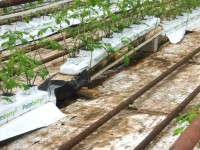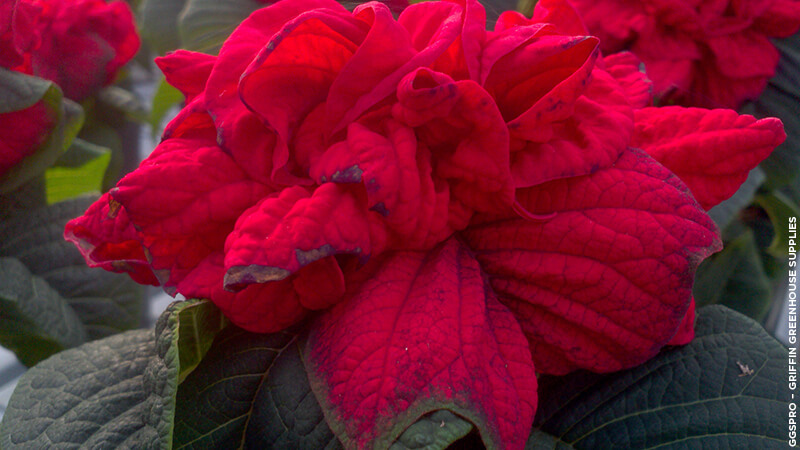Irrigation And Fertilizer Tips For New Vegetable Growers

Compared to other variable costs, fertilizers are not the largest part of the budget in conventional greenhouse production. Nevertheless, over the course of the season, mistakes in fertilizer use can lead to significant damages or crop losses. That makes this an important topic for ornamental growers who are experimenting with growing vegetable crops. This article will emphasize major differences between fertilizers used in vegetable production and in ornamentals production. The different nutrition strategies, monitoring and water volume per plant will also be explained.
Fertilizer
In ornamental production, nutrients are delivered using various water-soluble fertilizers through a fertilizer injector, through the use of controlled-release fertilizers, or a combination of the two. There are numerous fertilizer mixes available with all the needed nutrients already included.
The fertilization rate is often given in parts per million (ppm) of nitrogen (N), which is a way of expressing the fertilizer concentration. At younger stages, plants will use a complete water-soluble fertilizer at the rate of 50 to 100 ppm N. After transplanting, rates can be increased to 200 ppm N when the plants approach rapid growth. Many growers irrigate with clear water two or three times in between each fertilization. The pH control in the soil is fertilizer oriented. Many fertilizer mixes are designed to help to maintain desired soil pH levels.
In vegetable production, nutrients are delivered using various water-soluble fertilizers. Often, growers will have to prepare a complete nutrient solution made with bagged fertilizer mixes including all basic elements. You can ask your fertilizer supplier or advisor for your own recipe.
Some nutrients cannot be mixed together when they are highly concentrated, so two or three tanks will have to be used to separate incompatible elements. They are commonly called tank A, B and C. Tank C is mostly used for alkalinity and pH control.
The rate of fertilization is expressed in electrical conductivity (EC), a measurement of the total amount of ions in solution. The higher this number, the higher the concentration of all nutrients in the water. Most growers will use an EC from 2.0 to 3.5 mS/cm2 when they water plants. The values will be related to plant stage and light levels. It is important to always water with complete nutrient solutions. The pH level in the fertilizer mix is controlled independently from the feeding. A dedicated tank (tank C) is usually connected to an injector for pH control. Closely monitor pH at the dripper daily.
Irrigation
One of the most important requirements for successful vegetable growing is an accurate and reliable irrigation system. As a general rule, vegetable crops usch as tomatoes and cucumbers are usually supplied with one drip nozzle per plant with an output between 0.26 gallons and 1.32 gallon per nozzle per hour per 10 ft2 (averaging 0.4 to 0.6 gal/hour/10 ft2).
Proper irrigation strategy in vegetables require setting four different watering periods during the day. The first period is a substrate water status recovering moment. Irrigation starts slowly with longer times between each cycle.
The second period is set for active and rapid growth. This is the moment where the plants need more water for growth and the cooling process. It is usually related to sun level.
The third period is the same as the first one, but irrigation volume slows down. During that period, free water is slowly taken up by the roots.
The fourth period is a rest period. This is a period where no irrigation occurs, and roots take up almost all free water available in the substrate or bags.
You can see from this that an irrigation system simply operated by a time clock is not usually satisfactory, although it can be acceptable if it is combined with frequent monitoring.
Designate one person to be responsible for water monitoring. At the beginning of each day, this person should measure the water volume provided per plant. You can do this by simply putting a free dripper in a bottle at the beginning of a row. The person in charge of water monitoring checks early in the morning for the total volume of water provided to each plant the day before, and also the pH and EC. It is good to do this each day because it helps control your pump unit accuracy and irrigation settings.
Over the course of the day, the same person should check two or three times to make sure the correct water drainage occurs.
Some plants should be placed on a special gutter (with a slight slope, see the photo) to collect excess water. When the excess water is compared to what the plant received, it is possible to measure the drain percentage. Most of the time, you should see 20 percent to 35 percent of drain water per plant. If you don’t see the right drain percentage, or if the EC of the drain is high, the grower can set more frequent starts during that specific period.
Ornamental growers with a bit of experience won’t need much education and training to switch to vegetables. When it comes time to use the new fertilizers, there are plenty of recipes available for these crops. When creating your vegetable irrigation strategy, it is a good idea to get some help from an expert to make sure everything is set properly for monitoring.









